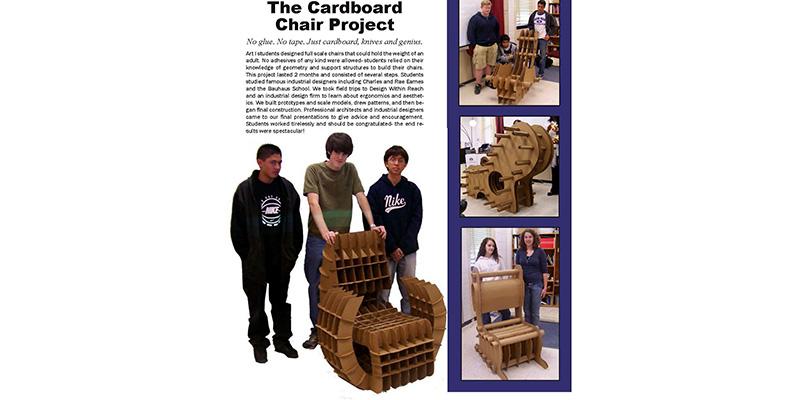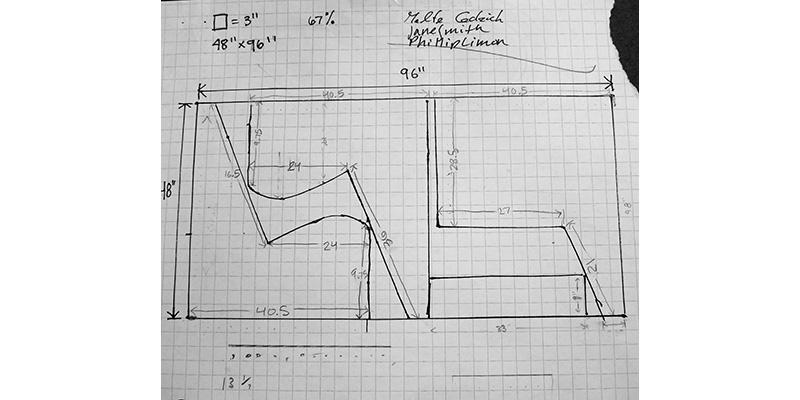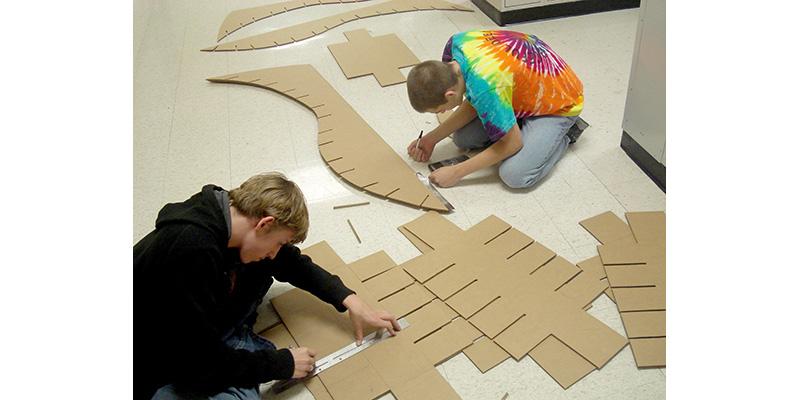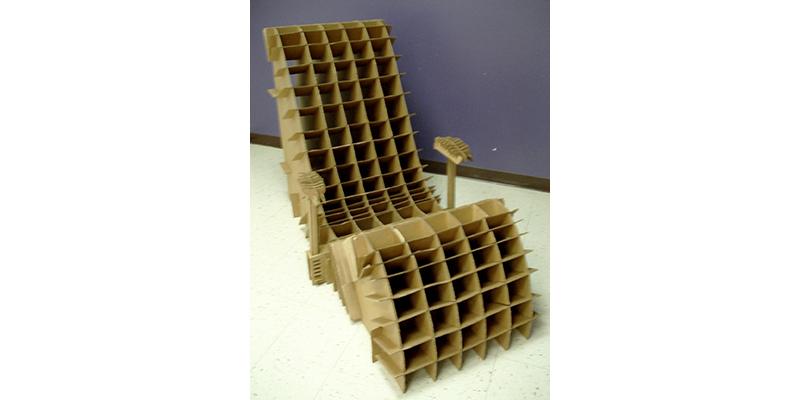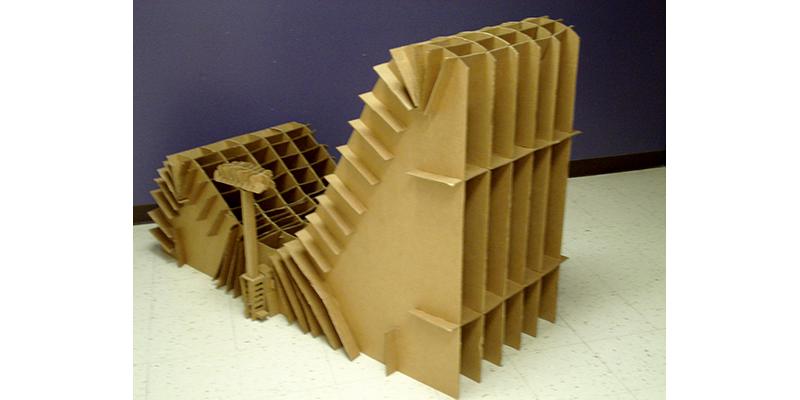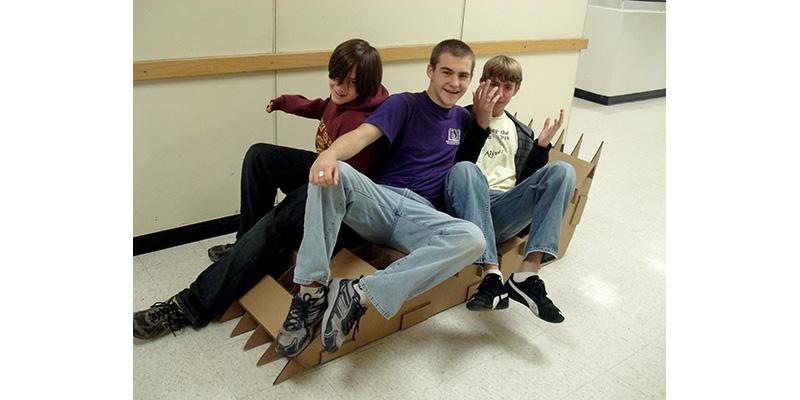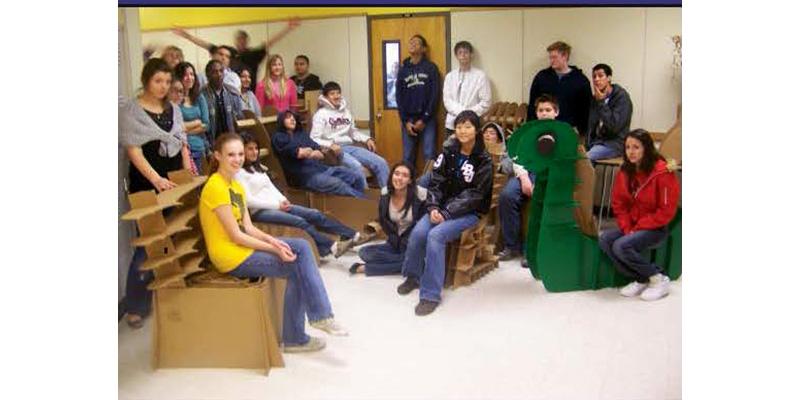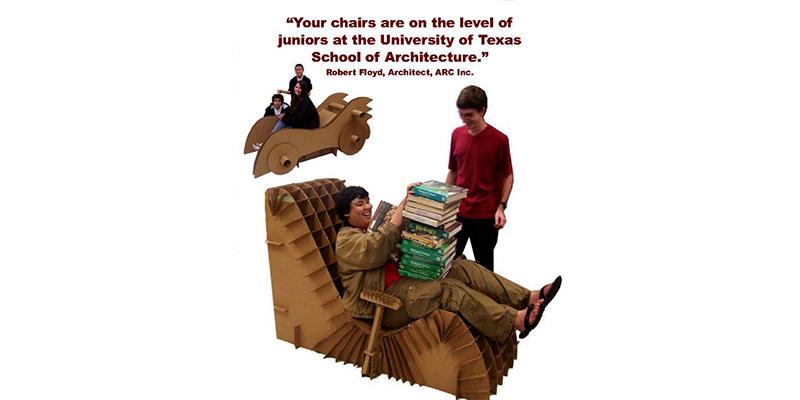Chair Design Without Adhesives
School: Liberal Arts and Science Academy
City/State: Austin, TX
Grade(s): 9, 10, 11, 12
Format(s): Model: Architectural
Subject(s): Mathematics, Science and Technology, Visual Arts
Project Overview
Art I high school students at the Liberal Arts and Science Academy in Austin, Texas designed cardboard chairs as part of a co-curricular project in physics, geometry and art.
Students were challenged to build a chair out of single-ply cardboard without using adhesives or glue of any kind. The chair was required to hold the weight of an adult, 18" from the ground.
This project used the design process of: research, brainstorm, prototype, build, analyze, and revise to guide the pacing. The research step was very comprehensive. Students studied geometry in architecture as it related to strength. The physics behind the use of triangles circles and arches as support structures were explored. Students also learned about historic chairs designed by industrial designers from the Bauhaus, Arts and Crafts Movement, and Art Nouveau to increase their understanding of aesthetics. Students brainstormed small models using tag board ensuring that form followed function. Students designed scale models, drawings, and then sought advice from professional industrial designers and architects. After several revisions, students built their final chair. Finally a presentation was made to the same group of professionals where students justified their design decisions and were graded on both function and aesthetics.
How This Project Can Be Useful
- Demonstrates how the outside use of professionals can be helpful both in the planning and presentation stage of a project
- Excellent example of mathematics and science skills used for real-life design
- Shows an interdisciplinary project crossing science, math and art
Relevant Resources
Common Core State Standards
| Standard | Long Term Learning Target |
|---|---|
| RST.9-10.3 |
|
| RST.9-10.7 |
|
| 6.RP.3 |
|
| 7.RP.1 |
|
| 7.RP.2 |
|
| 8.G.9 |
|
Additional Standards
- Texas Essential Knowledge and Skills Art, Level 1- Perception (A) (B)
- Texas Essential Knowledge and Skills Art, Level 1- Historic and cultural heritage (B)
- Texas Essential Knowledge and Skills Art, Level 1- Creative expression/performance (A) (B) (C)
- Texas Essential Knowledge and Skills Art, Level 1- Response/evaluation (A) (B)
